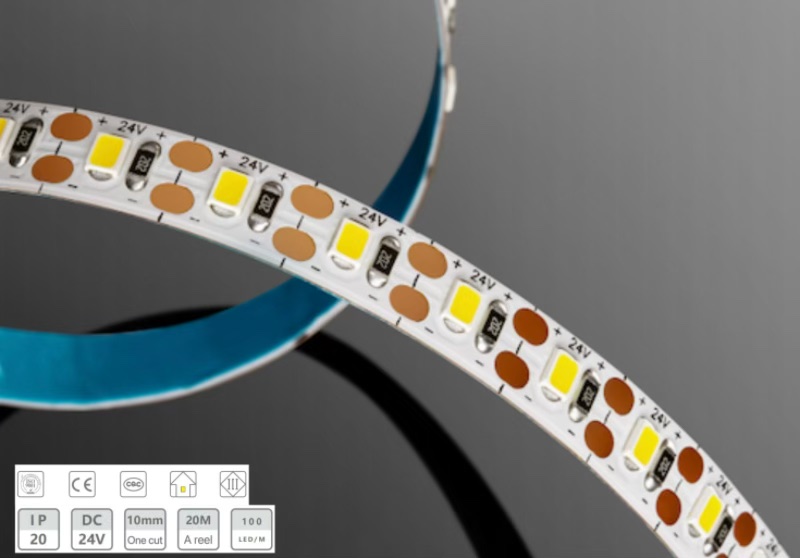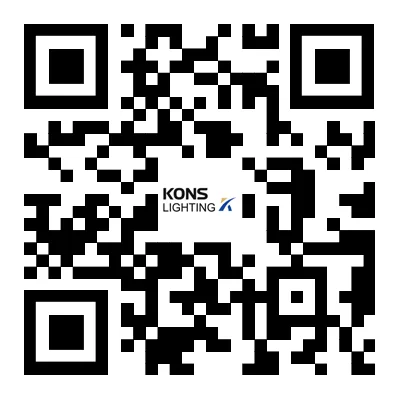- English
- Español
- Português
- русский
- Français
- 日本語
- Deutsch
- tiếng Việt
- Italiano
- Nederlands
- ภาษาไทย
- Polski
- 한국어
- Svenska
- magyar
- Malay
- বাংলা ভাষার
- Dansk
- Suomi
- हिन्दी
- Pilipino
- Türkçe
- Gaeilge
- العربية
- Indonesia
- Norsk
- تمل
- český
- ελληνικά
- український
- Javanese
- فارسی
- தமிழ்
- తెలుగు
- नेपाली
- Burmese
- български
- ລາວ
- Latine
- Қазақша
- Euskal
- Azərbaycan
- Slovenský jazyk
- Македонски
- Lietuvos
- Eesti Keel
- Română
- Slovenski
- मराठी
- Srpski језик
What Makes Monochrome Low-Voltage Light Strips a Game-Changer?
2025-10-14
Monochrome low-voltage light strips have become a pivotal solution in contemporary lighting design, combining efficiency, flexibility, and aesthetic appeal. Unlike traditional lighting fixtures, these strips operate on low-voltage systems, offering enhanced safety and reduced energy consumption while providing a consistent light output in a single color tone. This article explores the key features, advantages, applications, and future trends of monochrome low-voltage light strips, offering a comprehensive guide for both residential and commercial lighting solutions.
At the core, monochrome low-voltage light strips provide controlled illumination with high efficiency, making them suitable for decorative accents, task lighting, and ambient lighting. Their low-voltage operation ensures safety, easy installation, and compatibility with modern smart lighting systems. Understanding the technical specifications and potential benefits of these strips is essential for designers, architects, and homeowners seeking innovative and sustainable lighting solutions.
What Are the Core Features and Specifications of Monochrome Low-Voltage Light Strips?
Monochrome low-voltage light strips are designed with precision to deliver high-performance lighting in a flexible format. They are composed of a series of LEDs mounted on a narrow, often flexible, circuit board. The low-voltage design reduces power consumption while maintaining consistent light quality. Key parameters define their usability and performance across various applications.
Technical Specifications
| Parameter | Description |
|---|---|
| Voltage | 12V DC or 24V DC low-voltage operation |
| Power Consumption | 4-20 W per meter, depending on density |
| Color Temperature | Available in warm white (2700K–3200K), neutral white (4000K), and cool white (6000K) |
| LED Density | 30–120 LEDs per meter |
| Luminous Flux | 300–1800 lumens per meter |
| Beam Angle | 120° typical for even light distribution |
| Lifespan | 30,000–50,000 hours |
| Dimmable | Compatible with PWM or DC dimmers |
| Waterproof Rating | IP20 (indoor) or IP65/IP67 (outdoor and wet areas) |
| Cuttable Sections | Every 5–10 cm depending on model |
| Material | Flexible PCB with silicone coating for protection |
These specifications highlight how monochrome low-voltage light strips combine performance, longevity, and safety. The flexibility in installation options allows seamless integration into modern designs, including under-cabinet lighting, coves, staircases, display cases, and architectural accent lighting.
The strips’ ability to maintain consistent brightness across long runs makes them ideal for linear lighting projects where uniformity and aesthetic appeal are critical. Additionally, their compatibility with smart lighting controllers enables automated dimming and scheduling, enhancing energy efficiency in residential and commercial environments.
Why Should Monochrome Low-Voltage Light Strips Be the Preferred Choice for Lighting Projects?
Selecting the right lighting solution impacts energy costs, visual comfort, and design flexibility. Monochrome low-voltage light strips are increasingly preferred due to their unique advantages:
-
Energy Efficiency
Low-voltage operation significantly reduces energy consumption compared to conventional fluorescent or incandescent lighting. For example, a 12V LED strip with 10 W per meter consumes less power while providing equivalent light output to a 60 W traditional bulb. This efficiency translates to lower electricity bills and reduced carbon footprint. -
Enhanced Safety
Operating on low voltage minimizes the risk of electrical shock, making these strips suitable for applications in homes, schools, hospitals, and commercial spaces where safety is paramount. -
Flexible Design Options
Flexible PCB construction allows strips to bend around corners and curves, facilitating creative lighting layouts. The strips can be cut into specific lengths without compromising functionality, allowing for custom installation in architectural projects. -
Durability and Longevity
Monochrome low-voltage LED strips have lifespans exceeding 30,000 hours, reducing maintenance costs and replacement frequency. Many models feature silicone or epoxy coatings that protect against dust, moisture, and mechanical stress. -
Consistent Light Quality
Unlike other lighting options that may produce flickering or uneven illumination, monochrome LED strips maintain uniform brightness, crucial for visual comfort and design precision. -
Cost-Effectiveness in the Long Term
While the upfront investment may be higher than traditional lighting, the combination of energy savings, durability, and low maintenance makes monochrome low-voltage LED strips a cost-effective solution for modern lighting projects.
By addressing these advantages, designers and homeowners can confidently select monochrome low-voltage light strips to enhance both functional and decorative lighting.
How Are Monochrome Low-Voltage Light Strips Used Across Different Applications?
Monochrome low-voltage light strips are versatile, making them suitable for a wide range of applications, from residential interiors to large-scale commercial projects. Understanding how to implement them effectively ensures maximum performance and aesthetic impact.
Residential Applications
-
Under-Cabinet Lighting: Provides uniform illumination for kitchen counters, reducing shadows and enhancing task efficiency.
-
Cove Lighting: Creates a soft, indirect glow along ceiling coves, adding elegance to living rooms and bedrooms.
-
Staircase Lighting: Enhances safety while highlighting architectural features.
Commercial Applications
-
Retail Displays: Highlights merchandise with consistent brightness, drawing customer attention to products.
-
Office Lighting: Provides subtle ambient lighting that complements overhead lights without causing glare.
-
Hospitality Lighting: Creates welcoming environments in hotels, restaurants, and lounges.
Installation and Control Techniques
-
Surface Mounting: Strips are adhered to clean, dry surfaces using built-in adhesive backing.
-
Channel Mounting: Aluminum profiles or channels help with heat dissipation and create professional finishes.
-
Dimming and Automation: Integration with PWM or smart controllers allows precise dimming, scene control, and automation.
-
Series or Parallel Wiring: Depending on voltage drop and project size, strips can be wired in series or parallel for optimal performance.
By strategically choosing installation methods and control systems, monochrome low-voltage light strips can be customized for virtually any design requirement, ensuring both functionality and aesthetic appeal.
Future Trends and FAQs About Monochrome Low-Voltage Light Strips
Future Trends
The lighting industry is shifting toward sustainable, smart, and energy-efficient solutions. Monochrome low-voltage light strips are evolving in several directions:
-
Integration with Smart Home Systems: Enhanced compatibility with Wi-Fi, Zigbee, and Bluetooth for automated lighting scenarios.
-
Improved Energy Efficiency: Advances in LED technology continue to lower power consumption while increasing brightness.
-
Eco-Friendly Materials: Use of recyclable PCBs and low-impact materials to meet environmental regulations.
-
Customizable Color Temperatures: While monochrome, newer strips allow selectable warm, neutral, or cool white tones for dynamic ambiance control.
Frequently Asked Questions
Q1: Can monochrome low-voltage light strips be used outdoors?
A1: Yes, strips with IP65 or IP67 ratings are waterproof and suitable for outdoor applications. They can withstand rain, humidity, and dust, making them ideal for garden paths, exterior architectural features, or outdoor signage. Proper installation in channels or protective covers ensures long-term durability.
Q2: How do I ensure consistent brightness across long runs of LED strips?
A2: Voltage drop can affect brightness over extended lengths. To maintain uniform illumination, it is recommended to use thicker wiring, multiple power injection points, or higher voltage models such as 24V strips for longer runs. Additionally, using high-quality drivers with stable current output ensures consistent performance.
Conclusion and Brand Highlight
Monochrome low-voltage light strips represent a fusion of safety, efficiency, and aesthetic versatility in modern lighting. Their adaptability across residential, commercial, and architectural projects makes them a go-to solution for designers and homeowners seeking high-quality illumination. As the lighting industry embraces smart technology and eco-conscious materials, these strips are poised to play an even larger role in energy-efficient and creative lighting designs.
Kons provides an extensive range of high-performance monochrome low-voltage light strips, combining durability, precision, and modern design aesthetics to meet diverse project requirements. For tailored solutions, expert advice, and detailed specifications, contact us to explore how Kons can enhance your lighting projects with innovative monochrome low-voltage LED solutions.




